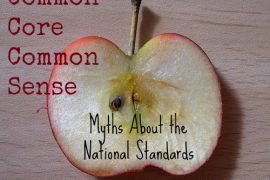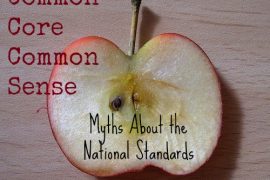I’ve hit the age when many of my friends and colleagues are managing the realities of having aging parents. Luckily, I’m not there yet — my mom is still very active, both physically and mentally. But many of us in our 40s or 50s are probably at least thinking about how we might manage our parent(s) affairs if/when they are unable to handle things on their own.
My friend and fellow writer, Beth, faced this problem last year, when she, her husband and her mother moved to another state. Beth’s mother needed a little more supervision, and so Beth and her husband arranged for her to live with them. That brought up some emotional and practical questions, which Beth shared in an online writing’s group that we both belong to. She gave me permission to share them here:
Mom lived independently until we combined households. She wants to pay us a monthly fee that covers “room and board.” The question is: How to figure a fair and reasonable amount.
It’s been a long time since [my husband] and I had a roommate. In those days, we simply divided the big stuff by three (rent, utilities, cable), and each person was responsible for his/her own food. That doesn’t seem fair in the current situation for a variety of reasons (not the least of which we’re talking about my MOM, not some friend).
I feel I’m making this unnecessarily complicated. Can anyone help me sort this out? I bring it up because Mom talks about it constantly. She seems to feel the amount she’s paying is too low, and I keep putting the brakes on changing the dollar figure until we have better data about our expenses.
Naturally, I think math can help us find some simple solutions to emotional problems. So I offered this:
I have a really easy and non-biased way to look at this. Calculate your total household costs — mortgage, utilities, food, etc. Then divide this by three. Each of these is a share.
Next, you can decide how many shares each person should have. For example, your mom may have only a half-share, based on what you think she can afford or how much she eats, etc. Take half of a share, and that’s her monthly rent.
Naturally, I like taking a mathematical approach, because it can help reduce the emotions. And if any of the variables go up or down — utilities, for example — you can adjust the rent really easily.
And that seemed to do the trick for Beth. In fact, she took things even farther, considering fair market value, as suggested by another group member:
Here’s how we solved the problem in the end:
1. I drew up Mom’s current monthly budget.
2. I drew up a list of household expenses that apply to her (including the mortgage payment). I didn’t include things like pet expenses or [my husband’s] fuel for commuting, obviously, because those are our sole expenses.
3. I used Laura’s methodology to divvy up the total household expenses into three full shares. Then I calculated partial shares: 3/4, 2/3, and 1/2.
4. I used [another member’s] data about the fair market value of a studio apartment in [my county] for comparison purposes.
5. Then I sat down with Mom and first explained her current budget. Next, I went over the household expenses.
6. I told her about the fair market value of a studio apartment and explained how that related to our attempt to determine what was a fair amount for her to pay us each month.
7. I showed her the share information.
8. I showed her how each share amount would affect her net income. Even at a “full share,” she still retains about 45% of her net income for “mad money,” and that’s without touching any investments. (I didn’t point that out to her, in terms of trying to steer her. I think what I wrote kind of reads that way. I just used a calculator to show her what each share amount would leave her, in terms of disposable income.)
9. I had written all these figures down on paper, so I stepped away to giver her time to peruse the numbers for awhile and consider what SHE wanted to do.
10. After a few minutes, she called me back and said she’d decided to pay a full share. She’s the type of person who likes to “pay her own way,” and she’ll still have plenty of mad money left over. She also was very happy she wouldn’t need to dip into any investments.
It’s important to note that this cut-and-dry approach didn’t erase all of the feelings in Beth’s situation. She was very nervous talking to her mother, and her mother felt responsible for paying a full share. See? Feelings.
Another interesting aspect is how flexible this process can be. With some simple parameters — the value of a full share vs. a half-share, for example — Beth’s family can alter the process depending on where everyone is financially. And if her mother needs more resources or Medicare helps to pay for things, the entire formula can be changed.
Just a bit of math helped Beth gain some perspective and offer her mother tremendous autonomy. The process also set them up to avoid conflict later on. Nice work, math!
Photo Credit: VinothChandar via Compfight cc
I’m currently reading The Organized Mind, by Daniel Levitin, and I can’t wait to share a review with you when I finish. He offers some really terrific math to help when medical decisions are tough. Four-square decision tables anyone?
What do you think of the process Beth worked out? (I also offer this approach as a way to divvy up the cost of a beach house among several family members.) Have you used math to help you come to a difficult or emotional decision? Do you think this approach would work for a young adult who hasn’t flown the nest? Share your stories in the comment section.










